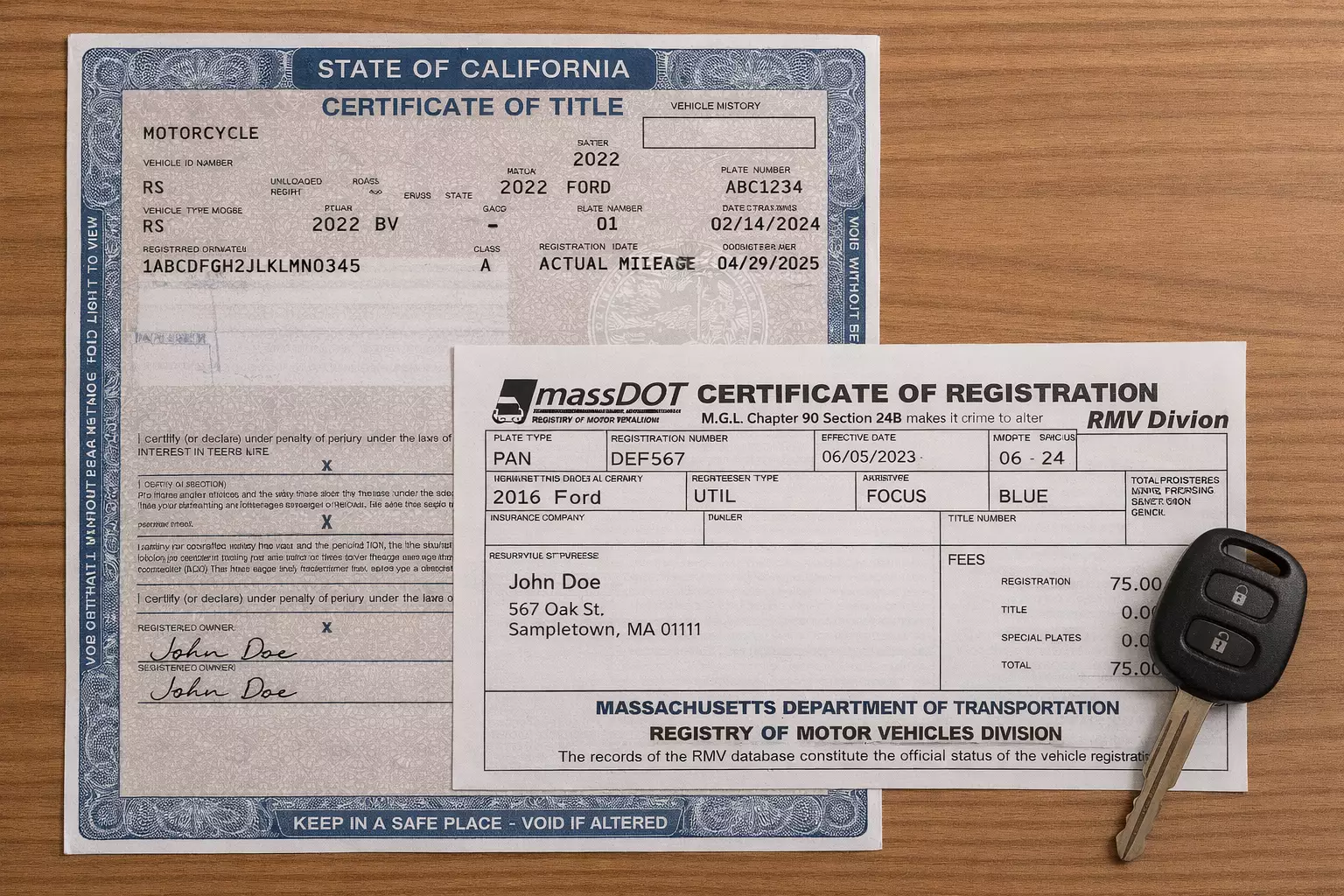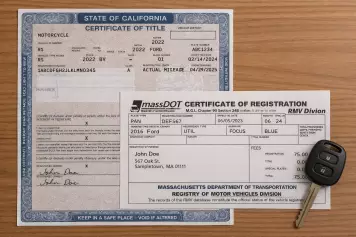Are you noticing excessive wear on the outside of your tires? If so, it's time to address this issue before it leads to more serious problems. Tire wear is a common problem that many drivers face, and understanding its causes can help prolong the lifespan of your tires and ensure a safer driving experience.
Here at GoodCar, our goal is to explore the main causes of outside tire wear and provide tips on how to prevent it. So, buckle up and get ready for some valuable insights into maintaining your vehicle's tires!
Types of Tire Wear
When it comes to tire wear, there are several different types that can occur. Understanding these types can help you diagnose any issues with your tires and take appropriate action.
- One common type of tire wear is known as cupping or scalloping. This occurs when the tread wears down unevenly in a wave-like pattern, creating dips or cups in the surface of the tire. Cupping is often caused by worn-out suspension components or improper wheel alignment.
- Another type of tire wear is called feathering. This occurs when the edges of the tread blocks on one side of the tire become rounded while the opposite side remains sharp. Feathering can be caused by misalignment or improper toe settings.
- Tire wear can also occur due to underinflation or overinflation. Underinflated tires tend to wear more on the outside edges, while overinflated tires may experience excessive wear at the center.
- Sidewall wear refers to damage on the sides of a tire rather than just on its treads. This kind of wear can result from various factors, including hitting curbs, driving through potholes, and aging rubber compounds.
Knowing about these different types of tire wear can help you identify potential problems before they worsen and lead to expensive repairs or replacements. Regular inspections and maintenance will go a long way in ensuring your tires have a longer lifespan and provide optimal performance for safer driving conditions.
What Would Cause a Tire to Wear on the Outside?
There are several factors that can contribute to tire wear on the outside. Here are some of the top factors that lead to uneven tire wear:
- Alignment: One of the main causes is a lack of proper maintenance and alignment. When your vehicle's alignment is off, it can cause uneven tire wear, with the outside edge being affected. This misalignment puts extra pressure on the outer edges of your tires, leading them to wear down faster.
- Inflation: Another factor that can cause outside tire wear is over or under inflation of your tires. If your tires are not properly inflated, it can result in uneven tread wear, with more pressure being placed on the outer edges. Overinflated tires tend to have less contact with the road surface, causing excessive wear on both sides of each tire.
- Conditions: Your driving habits and road conditions also play a role in outside tire wear. Aggressive driving maneuvers such as sharp turns at high speeds or taking corners too fast can put additional stress on the outer edges of your tires, causing them to wear out quickly. Similarly, driving frequently over rough roads or potholes can lead to accelerated treadwear on the outer areas.
To prevent outside tire wear, regular maintenance and alignments are crucial. Ensure that your vehicle's suspension components are in good condition and have regular alignments performed by a professional technician. Additionally, check your tire pressure regularly and inflate them according to manufacturer recommendations.
Lack of Proper Maintenance and Alignment

Lack of proper maintenance and alignment is one of the main causes of outside tire wear. When a vehicle's tires are not properly aligned, it can lead to uneven wear on the outer edges. This misalignment can occur due to various factors such as hitting potholes or curbs, worn suspension components, or simply neglecting regular maintenance.
Regular tire rotation and balancing are essential for maintaining even tread wear and prolonging the life of your tires. Additionally, it is crucial to regularly inspect your tires for any signs of damage or excessive wear. Proper inflation is also key in preventing outside tire wear. Overinflated tires have less contact with the road surface, causing increased pressure on the outer edges.
Driving habits play a significant role in outside tire wear as well. Aggressive driving maneuvers like hard braking and sharp turns put extra stress on the tires and can cause them to wear more quickly on the outsides.
Road conditions contribute to outside tire wear too. Rough roads with potholes or debris can lead to uneven tire wear patterns if you frequently drive through these types of conditions.
To prevent outside tire wear, it's important to have regular maintenance checks performed by a qualified technician who will ensure that your vehicle's alignment is correct, and all components are functioning properly. It's also crucial to maintain proper tire inflation levels according to manufacturer recommendations.
By taking these preventive measures, you can help maximize the lifespan of your tires while ensuring optimal performance and safety on the road.
Over/Under Inflation of Tires
Over/Under Inflation of Tires is another common cause of outside tire wear. When your tires are not properly inflated, it can lead to uneven tread wear and put unnecessary strain on the outer edges of the tires.
If your tires are overinflated, there is less surface area in contact with the road. This means that the weight of your vehicle is concentrated on a smaller portion of the tire, causing excessive wear on the outer edges. On the other hand, if your tires are underinflated, they have a larger contact patch with the road. This can lead to increased friction and heat buildup, which wears down the outer edges faster.
To prevent outside tire wear due to improper inflation, it's important to regularly check and maintain proper tire pressure according to your vehicle manufacturer's recommendations. Invest in a good quality tire pressure gauge and use it at least once a month or before long trips.
Properly inflating your tires not only helps extend their lifespan but also improves fuel efficiency and overall safety on the road. So, take care of those wheels by keeping them properly inflated!
Driving Habits and Road Conditions

Driving habits and road conditions play a significant role in causing outside tire wear. Your driving style can have a direct impact on the health of your tires. Aggressive driving, such as hard braking, rapid acceleration, and taking corners too fast, puts excessive stress on the outer edges of the tires.
Not only does aggressive driving cause wear and tear on the tread pattern but it also causes uneven wear along the edges of the tires. This is especially true when combined with poor road conditions like potholes or rough surfaces. The constant friction between your tires and these obstacles can lead to accelerated wearing on the outer edges.
Similarly, if you frequently drive over curbs or hit objects on the side of the road, it can cause damage to your tires' sidewalls resulting in outside tire wear. Additionally, consistently driving at high speeds can generate excess heat which weakens tire compounds leading to premature wearing.
To minimize outside tire wear caused by driving habits and road conditions, it's important to practice smooth and defensive driving techniques. This includes maintaining a safe following distance from other vehicles, avoiding sudden stops or accelerations whenever possible, and being mindful of road hazards like potholes or debris.
Regularly inspecting your tires for any signs of damage or uneven wear is crucial so that you can address any issues promptly. If you notice excessive outside tire wear despite practicing good driving habits and avoiding poor road conditions, consult with a professional mechanic who can assess alignment issues or recommend corrective measures specific to your vehicle.
By adopting responsible driving practices and staying attentive to prevailing road conditions while ensuring proper maintenance measures are taken regularly will help extend the lifespan of your vehicle's tires by preventing unnecessary outside tire wear.
How to Prevent Outside Tire Wear
Proper maintenance and regular inspections are key when it comes to preventing outside tire wear. First and foremost, make sure your vehicle is properly aligned. Misalignment can cause uneven tire wear, including excessive wear on the outer edges of the tires. Regularly check your tire pressure as well. Overinflated or underinflated tires can lead to increased wear on the outside of the tread.
In addition to alignment and inflation, pay attention to your driving habits and road conditions. Aggressive driving, such as hard braking or rapid acceleration around corners, can put extra stress on your tires and contribute to outside tire wear. Avoiding potholes and other rough road surfaces whenever possible will also help prolong the life of your tires.
Regular rotation of your tires is another effective way to prevent outside tire wear. Rotating them at recommended intervals ensures even distribution of weight across all four wheels, reducing strain on any one set of tires.
Consider investing in high-quality tires that are specifically designed for long-lasting performance. Quality materials and advanced tread patterns can help minimize outside tire wear while ensuring optimum grip on various road surfaces.
Learn About Outside Tire Wear and More with the Experts at GoodCar
Maintaining the condition of your tires is crucial for both safety and performance. Outside tire wear can be caused by a variety of factors, including lack of proper maintenance and alignment, over/under inflation of tires, and driving habits and road conditions.
To prevent outside tire wear, it is important to regularly check your tire pressure and ensure it is at the recommended level. Additionally, scheduling regular wheel alignments can help ensure that all four wheels are properly aligned, reducing uneven wear on the outer edges.
Remember that prevention is always better than cure when it comes to your vehicle. By taking proactive measures and addressing any issues promptly, you can prolong the lifespan of your tires and enjoy a smoother ride. For those looking to buy a new vehicle, getting a comprehensive vehicle history report can help them know the types of maintenance performed along with the odometer reading, recalls, title history, and more!









![Best Sites to Check a Car’s History [2025 Review]](https://media.infopay.net/thumbnails/K8lMeG2QLjE46LPqZlmoi6SunKKdT5qvlaRZk6e1.webp)










![Best Sites to Check a Car’s History [2025 Review]](https://media.infopay.net/thumbnails/K8lMeG2QLjE46LPqZlmoi6SunKKdT5qvlaRZk6e1-w356.webp)